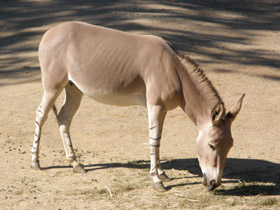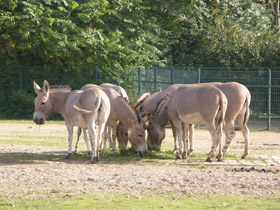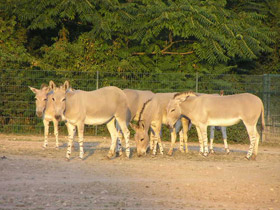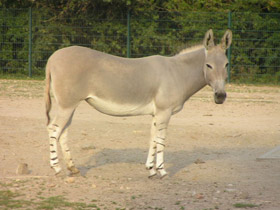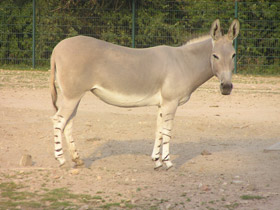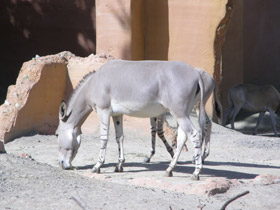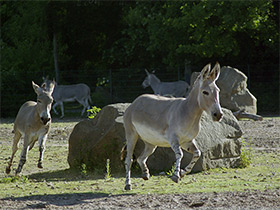The Somali wild ass (Equus africanus somaliensis)
The Somali wild ass (Equus africanus somaliensis) is a subspecies of the African wild ass.
It is found in Somalia, the Southern Red Sea region of Eritrea, and the Afar Region of Ethiopia. The legs of the Somali wild ass are striped, resembling those of its relatives, the zebras.
Habitat and nutrition
Equus africanus somalicus is a subspecies of the critically endangered African wild ass. Its last remaining populations occupy scattered areas of Somalia, Eritrea and Ethiopia (Red Sea coast, Somalia and Ethiopia's Afar region). The preferred habitat of Equus africanus somalicus is lowland, sandy and rocky, freshwater-poor, near the coast. It feeds on fine vegetation such as mimosa, thorny shrubs and tough woody grasses. The Somali donkey is also found in places where the red and black cliffs are scorched by the scorching sun, and the ground is strewn with stones, where only tough thorny grasses grow, which even a camel could not eat.
Appearance and lifestyle
The legs of Equus africanus somalicus) are covered with black horizontal stripes, almost like those of a zebra. It is a large animal, about 1.5 m high to the shoulders and covered with reddish-grey hair. Equus africanus somalicus has a strong body and a large, heavy head. These animals live in small herds, consisting of one male and 10-15 females, and do not differ in their lifestyle from other wild horses.
Reproduction
Somali wild asses typically give birth in the spring, a common characteristic among equids, after a year-long gestation. Within hours, the foal is up on its legs and keeping up with its mother. At around five days old, the foal is already nibbling grass. By the time its two weeks old, the foal is grazing regularly, however, still depending on its mother's milk for fluids. The foal is weaned by 12 to 14 months, but still stays close to its mother, only leaving to play or feed with the other foals in the herd.
Behavior
Due to the limited resources found in their habitat, somali wild Asses live in a fission-fusion society. Most adults live alone, but sometimes form small herds consisting of females and their young. In areas that have more resources, or have more rain, they will sometimes fuse together to form larger temporary herds. Stallions can maintain territories as large as nine square miles. They frequently leave dung piles as markers to remind them of their territory's boundaries. While females are welcome in their territories, stallions will often fight other males who try to mate with females in their territories. However, stallions have been observed allowing males into their territories for grazing, as long as they show no interest in his harem.
Domestication
Domestic donkeys found in Italy are typically descended from the Somali wild ass, as opposed to those from other European countries where domesticated stock are usually descended from the Nubian wild ass.
Conservation
A conservation project (mainly supported by Zoo Basel) in Eritrea counted (before 2014) 47 Somali wild asses living in the mountains between the Buri Peninsula and the Dallol Depression, which is within the larger Danakil Depression, near Eritrea's border with Ethiopia.

















